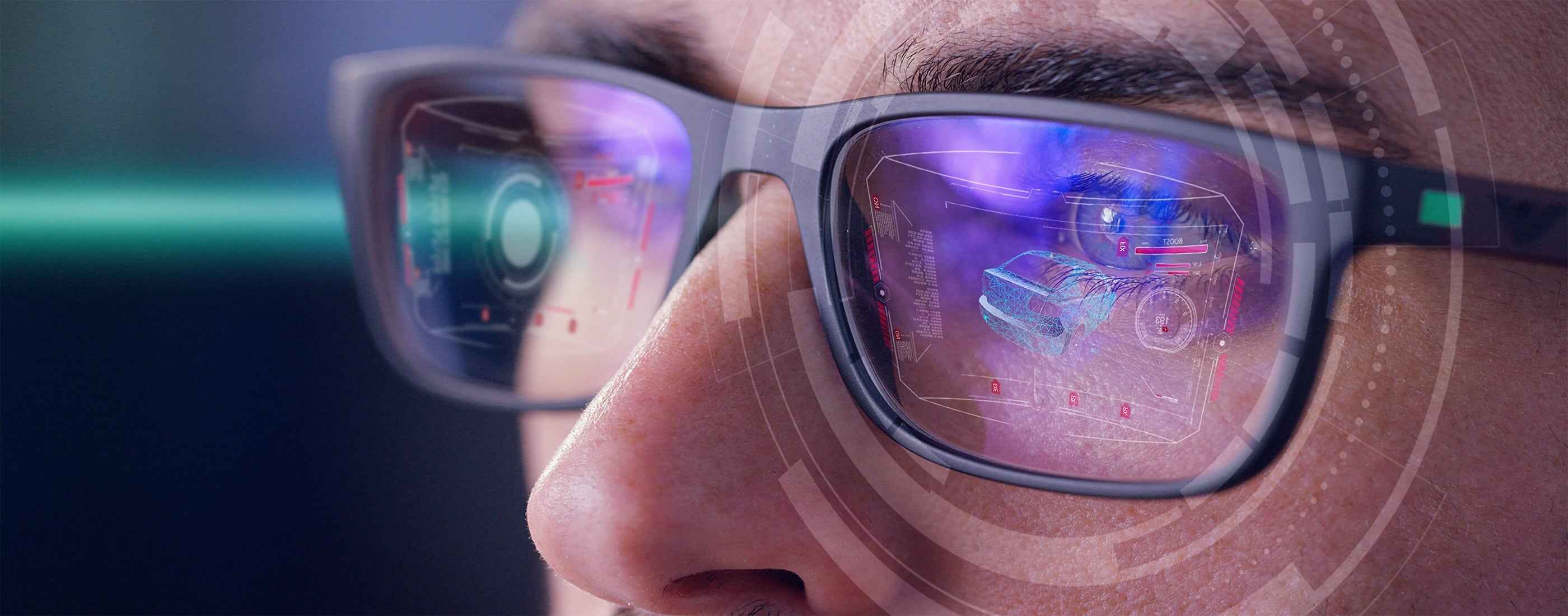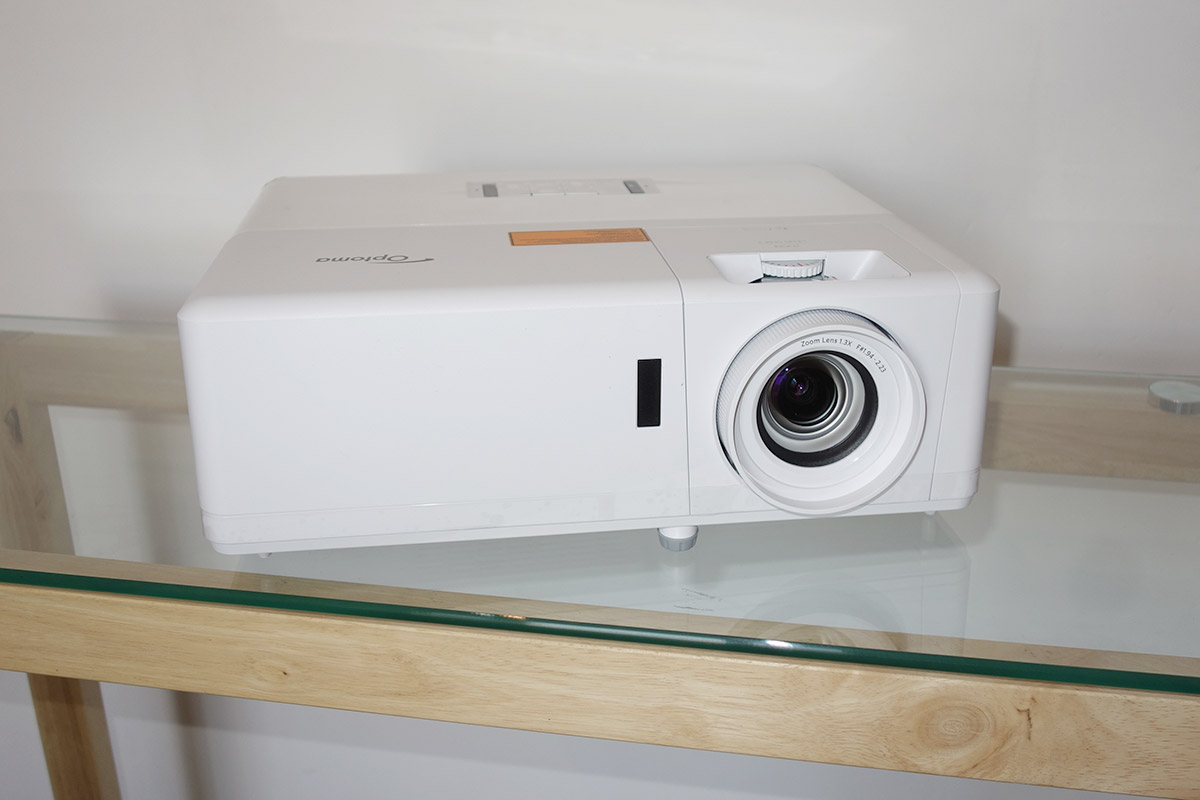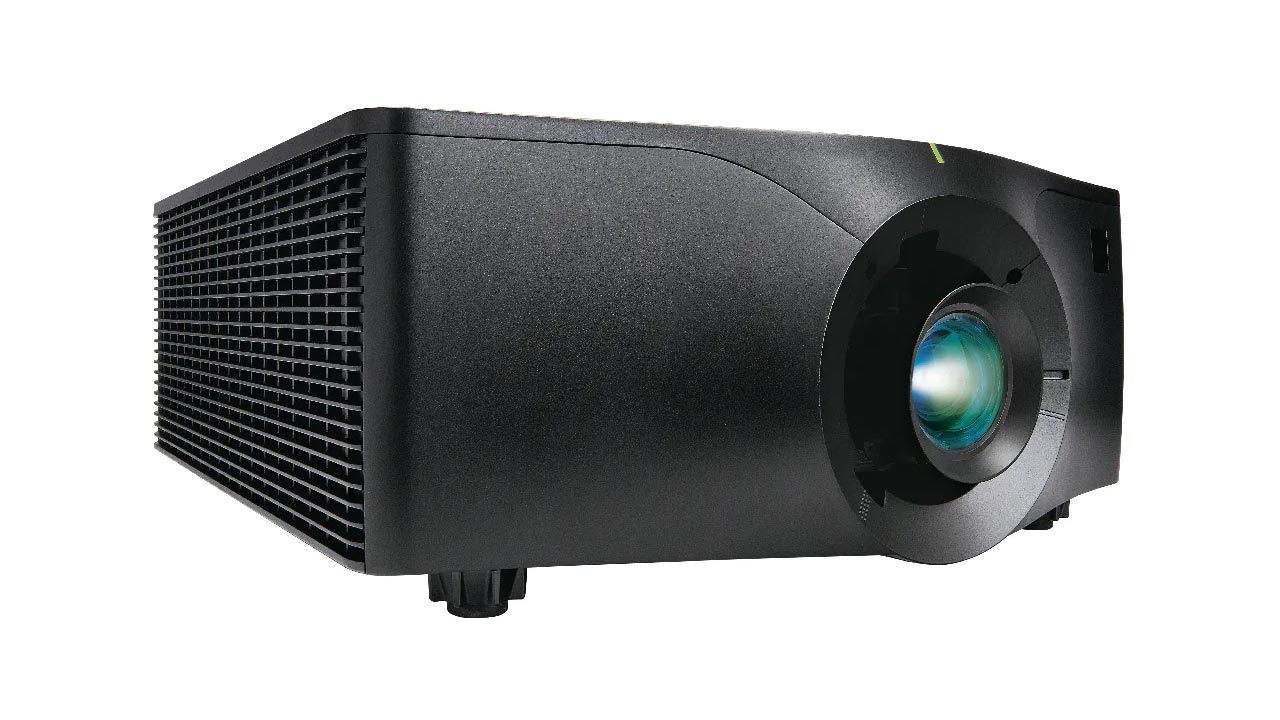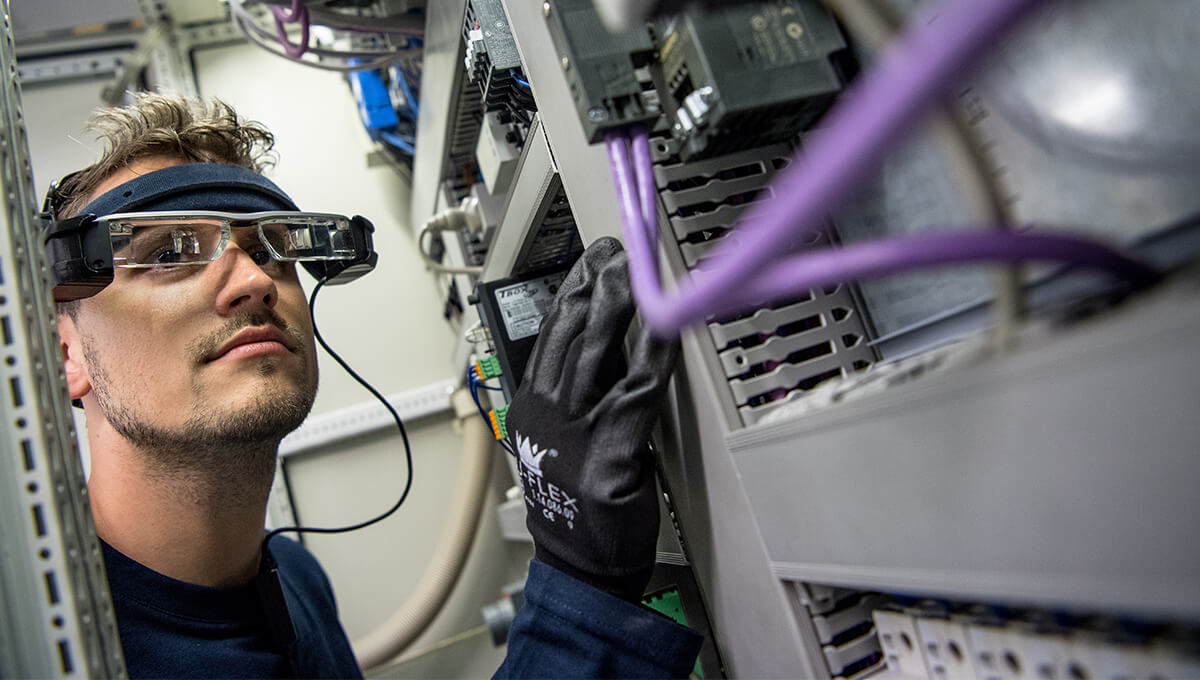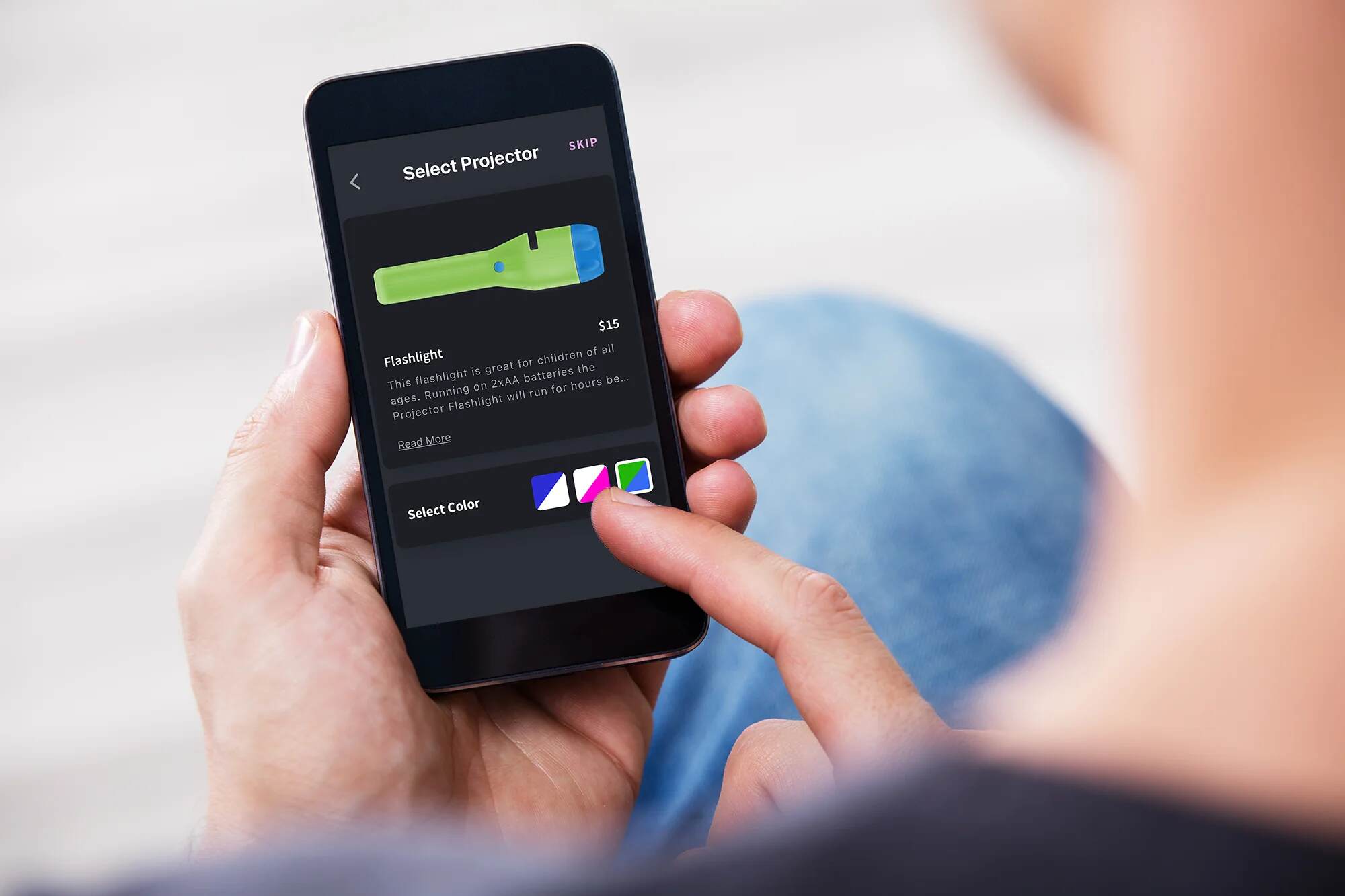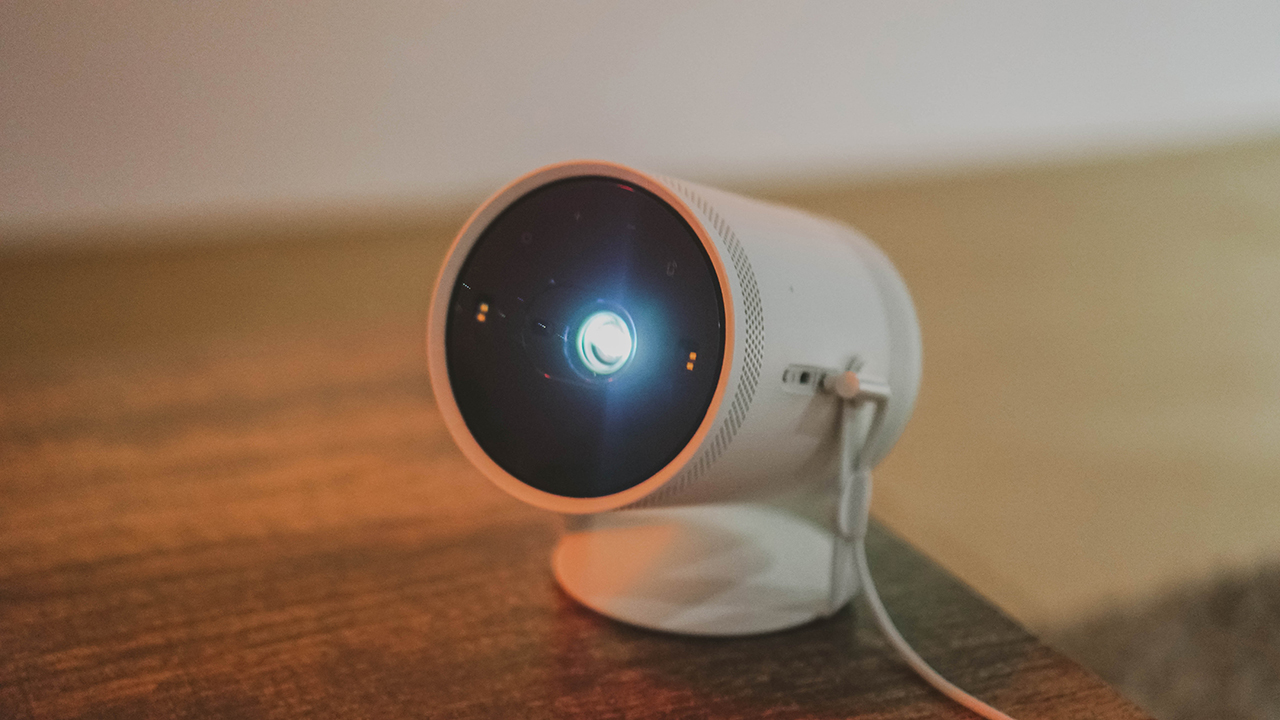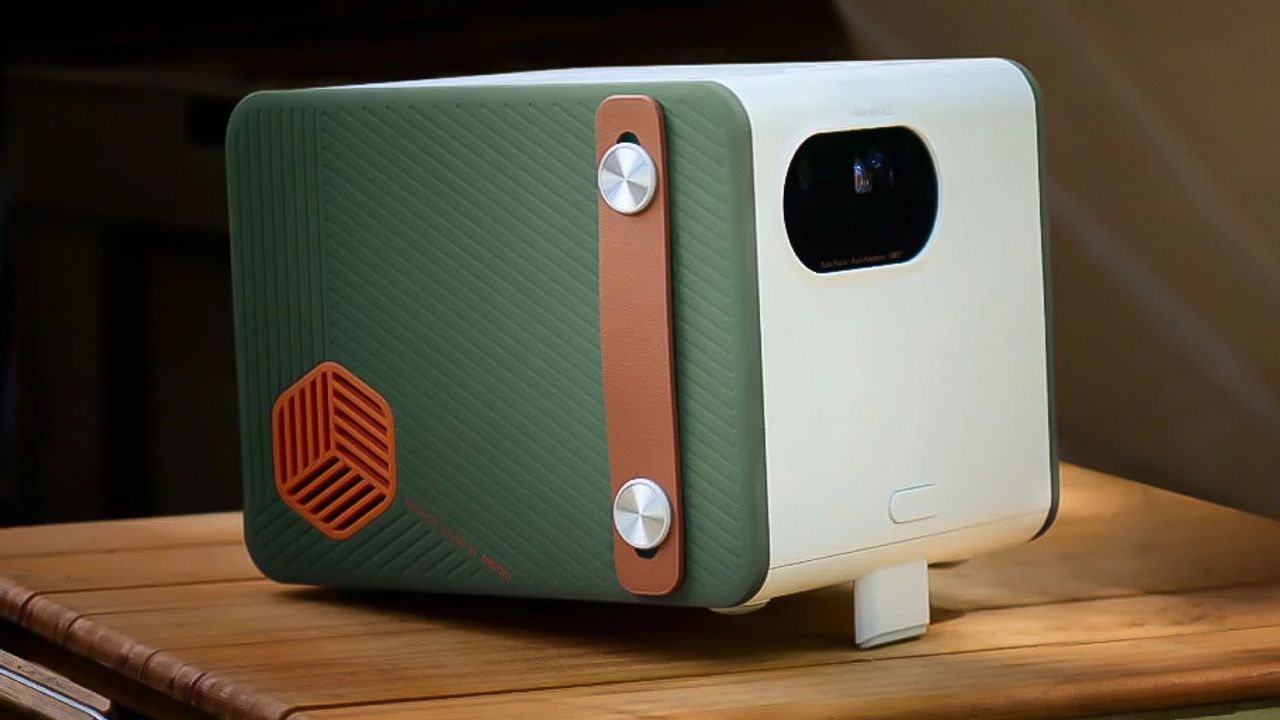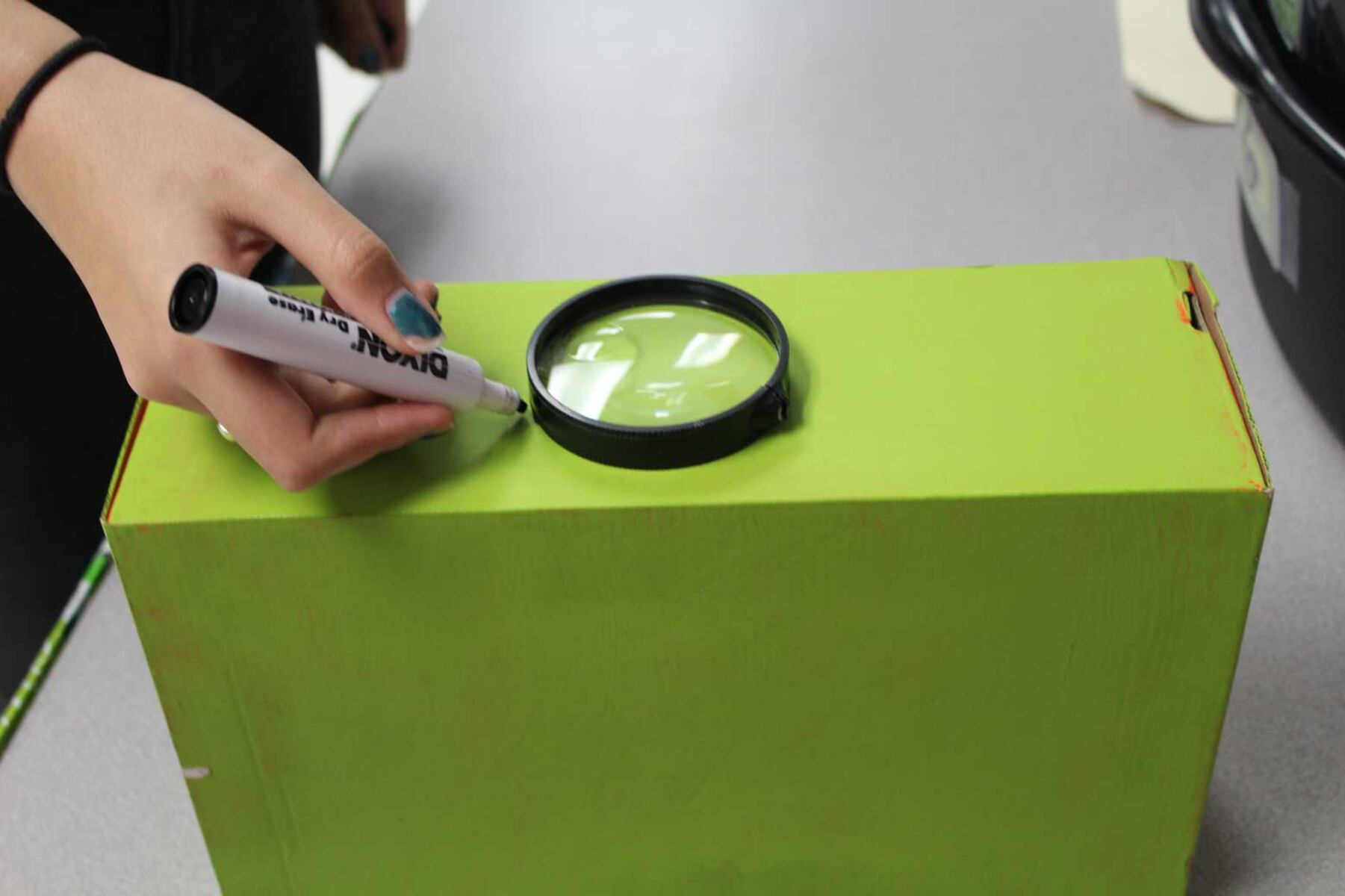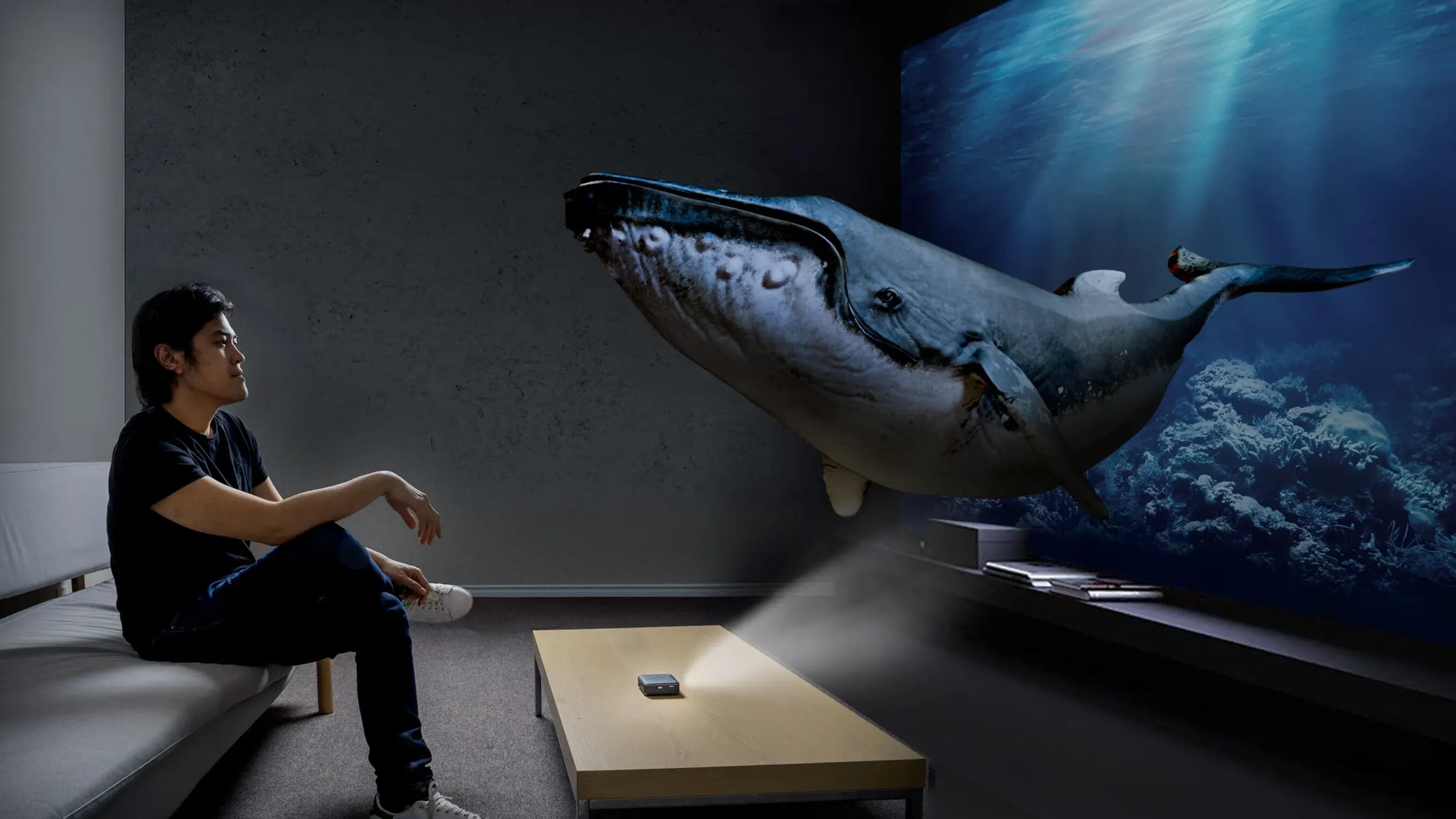Types of Projectors used in Smart Glasses
Smart glasses have become increasingly popular in recent years, offering users a wide range of features and functions. One key component of smart glasses is the projector, which enables the display of images, videos, and augmented reality (AR) content directly in the user’s field of view. Let’s take a closer look at the different types of projectors commonly used in smart glasses.
1. Pico Projectors: Pico projectors are a popular choice for smart glasses due to their compact size and portability. These tiny projectors utilize Digital Light Processing (DLP) or Liquid Crystal on Silicon (LCoS) technology to project images and videos onto surfaces or directly into the user’s eye. Pico projectors offer decent image quality and are energy-efficient, making them ideal for integration into lightweight smart glasses.
2. Micro Projectors: Similar to pico projectors, micro projectors are designed to be small and lightweight. However, they offer improved brightness and image resolution compared to pico projectors. Micro projectors use advanced optics and LED light sources to deliver clear and vibrant visuals, making them suitable for displaying detailed AR content and videos on smart glasses.
3. LCOS Projectors: Liquid Crystal on Silicon (LCOS) projectors are gaining popularity in smart glasses due to their high image quality and compact form factor. LCOS projectors use liquid crystal technology to project images with excellent color accuracy and sharpness. They are known for delivering immersive AR experiences and are often used in high-end smart glasses aimed at professional applications.
4. DLP Projectors: Digital Light Processing (DLP) projectors utilize microscopic mirrors to reflect light and create images. DLP projectors offer high contrast ratios, fast response times, and excellent color reproduction. These projectors are commonly found in smart glasses designed for entertainment purposes, such as gaming or watching videos.
5. Waveguide-based Projectors: Waveguide technology is a cutting-edge approach used in some smart glasses to project images directly onto the user’s eye without the need for external projectors. This technology uses transparent glass or plastic waveguides to guide and bend light, creating the illusion of virtual images overlaying the real world. Waveguide-based projectors offer a compact and lightweight solution for AR content display in smart glasses.
Each type of projector has its own strengths and weaknesses, depending on the intended use of the smart glasses. Factors such as image quality, brightness, energy efficiency, and size play a crucial role in selecting the right projector technology for smart glasses. By understanding the different types of projectors available, manufacturers can choose the most suitable option to enhance the user experience and maximize the potential of smart glasses.
Benefits of Projectors in Smart Glasses
Projectors play a vital role in the functionality and versatility of smart glasses. By integrating projectors into these wearable devices, several benefits are offered to users. Let’s explore the advantages of using projectors in smart glasses:
1. Enhanced Viewing Experience: Projectors in smart glasses enable users to view content directly in their line of sight, creating an immersive and hands-free experience. Whether it’s watching videos, browsing augmented reality (AR) content, or accessing real-time information, projectors enhance the viewing experience by seamlessly overlaying digital content onto the real world.
2. Increased Screen Real Estate: Smart glasses with projectors eliminate the need for physical screens or displays. Through projection technology, a virtually infinite screen size can be achieved, offering users a larger visual canvas for content consumption, gaming, or professional applications. This expanded screen real estate enhances productivity and provides a more engaging experience.
3. Portability and Convenience: Projectors integrated into smart glasses add a level of portability and convenience. Users can carry their smart glasses with embedded projectors wherever they go, eliminating the need for separate devices such as smartphones or tablets. This makes smart glasses ideal for on-the-go usage, whether it’s for entertainment, work, or accessing important information in real-time.
4. Augmented Reality (AR) Experiences: Projectors enable the display of AR content directly onto the user’s field of view. By overlaying digital information onto the real world, smart glasses with projectors offer a seamless and interactive AR experience. Users can access real-time data, view navigation instructions, or even interact with virtual objects in their surroundings, enhancing productivity and expanding the possibilities of AR applications.
5. Hands-Free Interaction: With projectors in smart glasses, users can interact with digital content without the need for physical devices or touchscreens. Projected interfaces allow for intuitive gesture controls, voice commands, or even eye-tracking technology. This hands-free interaction capability provides a more natural and efficient way of interacting with digital content while keeping the user’s hands and attention free for other tasks.
6. Versatile Applications: The integration of projectors in smart glasses opens up a wide range of applications across various industries. From healthcare and manufacturing to entertainment and education, smart glasses with projectors can be tailored to suit specific professional needs or personal interests. They can be used for remote collaboration, training simulations, personal entertainment, or even assisting individuals with visual impairments.
Overall, projectors greatly enhance the functionality and user experience of smart glasses. By offering an immersive viewing experience, increased screen real estate, portability, and hands-free interaction, projectors open up a world of possibilities for both professional and personal use. As technology advances, we can expect even more innovative applications and features to be integrated into smart glasses with projectors.
Factors to Consider when Choosing Projectors for Smart Glasses
Choosing the right projectors for smart glasses is crucial for ensuring optimal performance and user experience. Several factors should be taken into consideration when making this decision. Let’s delve into the key factors to consider:
1. Image Quality: One of the primary considerations is the image quality produced by the projector. High-resolution projectors with excellent color reproduction and sharpness are essential for delivering clear and vibrant visuals in smart glasses. It is crucial to select projectors that meet the desired image quality standards based on the intended applications for the smart glasses.
2. Brightness: The brightness of the projector plays a vital role, especially in outdoor or brightly lit environments. Higher brightness levels ensure that projected content remains visible and legible in varying lighting conditions. It is important to choose projectors with sufficient brightness to provide a comfortable viewing experience for users, even in challenging lighting environments.
3. Size and Weight: Smart glasses must be comfortable to wear for extended periods, which necessitates lightweight and compact projectors. Bulky or heavy projectors can cause discomfort and hinder the overall usability of the smart glasses. It is essential to select projectors that strike a balance between performance and size, allowing for comfortable wearing without compromising functionality.
4. Power Efficiency: Power efficiency is a critical factor to consider to ensure extended battery life in smart glasses. Projectors that consume excessive power can drain the device’s battery quickly, leading to frequent recharging. Energy-efficient projectors help optimize battery life, allowing users to use the smart glasses for longer periods without interruption.
5. Durability: Smart glasses may be subjected to various environmental conditions, such as dust, moisture, or physical impact. Therefore, it is essential to choose projectors that are durable and can withstand such conditions. Projectors with robust construction and protective coatings can prolong the lifespan of smart glasses and ensure reliable performance even in challenging environments.
6. Compatibility: The chosen projectors should be compatible with the smart glasses’ operating system and software. Compatibility ensures seamless integration and smooth functioning of the projector features within the smart glasses ecosystem. It is crucial to select projectors that can be easily integrated, updated, and controlled through the smart glasses’ software interface.
7. Cost: Cost is another important factor to consider when selecting projectors for smart glasses. It is essential to strike a balance between the desired features, performance, and the budget allocated for the projectors. Careful evaluation of the available options and their cost-effectiveness is vital to ensure value for money without compromising on quality.
Considering these factors when choosing projectors for smart glasses will help manufacturers and users make informed decisions. It is crucial to prioritize image quality, brightness, size and weight, power efficiency, durability, compatibility, and cost to ensure the perfect balance between functionality, comfort, and affordability in smart glasses.
Applications of Projectors in Smart Glasses
The integration of projectors in smart glasses opens up a wide range of applications across various industries. Let’s explore some of the key areas where projectors in smart glasses have found practical use:
1. Healthcare: In the healthcare industry, smart glasses with projectors enable healthcare professionals to access patient data, medical records, and real-time information directly in their field of view. Surgeons can benefit from projected images during procedures, aiding in precision and reducing the need to look away from the operating field. Smart glasses with projectors can also be used for teaching and training purposes, allowing medical students to view detailed anatomical models or instructional videos.
2. Industrial and Manufacturing: Projectors integrated into smart glasses have significant implications in industrial and manufacturing settings. Workers can access digital instructions, assembly diagrams, and safety protocols overlaid onto the real environment, improving efficiency and reducing errors. Projected real-time analytics and data visualization can assist in monitoring processes, optimizing workflows, and reducing downtime.
3. Remote Collaboration: Smart glasses with projectors enable remote collaboration by overlaying digital content onto the wearer’s field of view. Remote technicians or experts can provide real-time guidance through projected instructions, annotations, or virtual assistance. This functionality allows for hands-free collaboration, making it valuable in industries such as field service, construction, and logistics.
4. Education and Training: Projectors in smart glasses revolutionize the learning experience by augmenting traditional educational methods. Students can access interactive 3D models, virtual experiments, and historical reconstructions overlaid onto the real-world environment. The integration of projectors into smart glasses facilitates immersive and engaging learning experiences, promoting student engagement and knowledge retention.
5. Entertainment and Gaming: Smart glasses with projectors offer a unique entertainment experience by projecting videos, games, and augmented reality content directly in the wearer’s field of view. Users can enjoy immersive gaming experiences, watch movies without the need for a separate screen, and explore interactive augmented reality games. Projectors enhance the entertainment capabilities of smart glasses, providing users with a more engaging and immersive entertainment experience.
6. Accessibility: Projectors in smart glasses have immense potential in enhancing accessibility for individuals with visual impairments. By projecting magnified or enhanced images directly onto the wearer’s field of view, smart glasses can assist individuals with visual impairments in navigating their surroundings or accessing information with greater ease.
The applications mentioned above provide just a glimpse of the diverse possibilities that projectors bring to smart glasses. As technology continues to evolve, the integration of projectors in smart glasses will unlock even more innovative applications across various fields, improving productivity, enhancing user experiences, and transforming industries.
Integrating Projectors in Smart Glasses: Challenges and Solutions
The integration of projectors in smart glasses presents unique challenges that need to be addressed to ensure optimal performance and user experience. Let’s explore some of the key challenges faced during the integration process, along with possible solutions:
1. Size and Weight: Projectors, especially those with sufficient brightness and image quality, can add bulk and weight to the smart glasses. This challenge is overcome by using compact and lightweight projector technologies, such as pico projectors or micro projectors. Advancements in miniaturization and optical design techniques have led to the development of smaller projectors that fit seamlessly into the form factor of smart glasses.
2. Heat Dissipation: Projectors generate heat when in operation, and excessive heat can affect the overall performance and longevity of the smart glasses. Effective heat dissipation solutions, such as advanced heat sinks or cooling systems, are needed to prevent overheating. The integration of efficient thermal management mechanisms ensures the optimal functioning of projectors without compromising user comfort.
3. Power Consumption: Projectors require a significant amount of power to project high-quality images and videos. This poses a challenge as smart glasses typically have limited battery capacity. To address this, low-power projector technologies, energy-efficient light sources, and optimized power management algorithms can be implemented. By minimizing power consumption, the battery life of smart glasses can be extended, providing users with prolonged usage time.
4. Image Calibration and Alignment: Correct image calibration and alignment are crucial for delivering accurate and distortion-free projection in smart glasses. The integration of sensors and algorithms can help calibrate the projector in real-time, compensating for any misalignment or distortion caused by changes in head position or movement. Advanced calibration and alignment techniques ensure that the projected content aligns perfectly with the real-world environment.
5. Optics and Focus: Achieving optimal focus and image quality across the entire field of vision can be challenging in smart glasses with integrated projectors. Utilizing advanced optics and lens designs can help overcome this challenge. Additionally, the incorporation of autofocus or dynamic focus mechanisms can ensure that the projected content remains sharp and clear, regardless of the distance or depth of the objects being projected onto.
6. Ambient Light Interference: Ambient light can significantly impact the visibility of projected content in smart glasses. Advanced light sensing technologies, such as ambient light sensors or adaptive brightness control, can be employed to adjust the projector’s brightness and contrast automatically. By adapting to different lighting conditions, smart glasses ensure that the projected content remains visible and legible at all times.
7. User Interface Design: Designing a user-friendly interface for controlling the projector features in smart glasses is essential. This involves creating intuitive gestures, voice commands, or touchless interactions to navigate and control the projected content. User experience testing and feedback are crucial for refining the user interface and ensuring seamless interaction with the projector functionality.
By addressing these challenges through innovative engineering and design approaches, the integration of projectors in smart glasses can deliver a high-quality and immersive visual experience to users. Overcoming size and weight constraints, managing heat dissipation, optimizing power consumption, ensuring accurate image calibration, focusing, and dealing with ambient light interference, and creating a user-friendly interface are key to successful integration and deployment of projectors in smart glasses.
Case Studies of Smart Glasses with Projector Features
Several companies have developed smart glasses with integrated projectors, showcasing the diverse applications and capabilities of this technology. Let’s take a look at some notable case studies:
1. Vuzix Blade AR Smart Glasses: The Vuzix Blade AR Smart Glasses feature a high-resolution micro-display and a built-in projector. These smart glasses project a virtual screen equivalent to a 32-inch high-definition display into the user’s field of view. The projector enables users to view notifications, videos, and augmented reality content seamlessly while still being aware of their surroundings. With the integrated projector, the Vuzix Blade AR Smart Glasses provide an immersive and hands-free visual experience.
2. Epson Moverio BT-300: The Epson Moverio BT-300 smart glasses combine advanced display technology with an integrated projector. The projector overlays digital content onto the real-world environment, allowing users to view augmented reality information and immersive 3D content. With the Moverio BT-300, users can access interactive applications, watch videos, and even play games, all projected directly into their field of view. These smart glasses demonstrate the versatility of integrated projectors in delivering engaging and interactive visual experiences.
3. Sony SmartEyeglass: The Sony SmartEyeglass is equipped with a holographic waveguide display technology, which acts as an integrated projector. The waveguide technology projects images and information directly onto the user’s eye, creating an augmented reality experience. The SmartEyeglass enables users to access notifications, navigation instructions, and other contextual information without obstructing their field of vision. The smart glasses with integrated projectors showcase Sony’s endeavor to create a seamless and non-intrusive augmented reality experience.
4. Lumus DK-50: The Lumus DK-50 smart glasses incorporate waveguide optics and an integrated projector to deliver a high-definition augmented reality experience. The projector projects images directly onto the lens, blending digital content seamlessly with the real world. The DK-50 smart glasses provide users with an immersive AR experience, enabling applications such as real-time navigation, remote collaboration, and hands-free access to information.
5. Lenovo New Glass C220: The Lenovo New Glass C220 smart glasses feature an integrated projector that projects a virtual display onto the lens of the glasses. Users can view augmented reality information, videos, and images directly overlaid onto the real world. The New Glass C220 offers various industrial applications, such as remote assistance for field service technicians and hands-free access to information and instructions in manufacturing environments.
These case studies highlight the practical implementations of smart glasses with integrated projectors. From augmented reality experiences and immersive visual displays to hands-free access to information and remote collaboration, these smart glasses demonstrate the potential of combining projector technology with wearable devices to enhance various industries and user experiences.
Future Trends in Projectors for Smart Glasses
As technology continues to advance, projectors for smart glasses are poised to undergo significant advancements and introduce exciting new features. Let’s explore some of the future trends in projectors for smart glasses:
1. Higher Resolution and Image Quality: Future projectors for smart glasses will likely incorporate higher resolution displays, enabling even more detailed and immersive visual experiences. Advancements in display technologies, such as MicroLED or OLED, will contribute to enhanced image quality, improved color accuracy, and sharper visuals.
2. Enhanced Connectivity: Projectors in smart glasses will become more seamlessly connected to external devices and networks. This will enable real-time data streaming, cloud connectivity, and integration with Internet of Things (IoT) devices, expanding the possibilities for interactive content and remote collaboration.
3. Advanced Augmented Reality (AR) Capabilities: Projectors in smart glasses will evolve to provide more advanced AR capabilities. They will offer improved object tracking and recognition, spatial mapping, and real-time environment scanning. This will enable more accurate and interactive AR experiences, ranging from virtual object interaction to real-time information overlays.
4. Compact and Lightweight Designs: Future projectors for smart glasses will continue to focus on miniaturization and reducing weight. With advancements in optical design and material technologies, projectors will become even smaller, lighter, and more comfortable to wear, allowing for extended usage without causing fatigue or discomfort.
5. Extended Battery Life: Power efficiency will be a priority in the development of projectors for smart glasses. Future projectors will utilize advanced energy-saving technologies and power optimization algorithms, leading to extended battery life for smart glasses. This will enable users to enjoy continuous usage without frequent recharging.
6. Integrated Eye Tracking: Eye-tracking technology will play a more significant role in projectors for smart glasses, allowing for improved user interaction and enhanced user experiences. Integrated eye tracking will enable gaze-based control and interaction with projected content, making the overall user interface more intuitive and natural.
7. Smart Projection Adjustment: Future projectors for smart glasses will include intelligent projection adjustment capabilities. They will automatically adjust brightness, contrast, and focus based on ambient lighting conditions, distance, and user preferences. This will ensure optimum visibility and image quality in various environments, whether indoors or outdoors.
These future trends in projectors for smart glasses showcase the potential for even more immersive, connected, and advanced visual experiences. With higher resolution displays, enhanced connectivity, advanced AR capabilities, compact designs, extended battery life, integrated eye tracking, and smart projection adjustment, projectors will continue to revolutionize the functionality and applications of smart glasses, opening up new possibilities across industries and user scenarios.
Conclusion
Projectors are integral components of smart glasses, enabling users to access various forms of digital content directly in their field of view. From pico projectors to waveguide-based projectors, there are different types of projectors that can be integrated into smart glasses based on specific needs and applications.
The benefits of projectors in smart glasses are vast. They enhance the viewing experience by providing an immersive and hands-free way of accessing content. The increased screen real estate offered by projectors allows for a larger canvas to interact with digital information. Projectors also enable augmented reality experiences, hands-free interaction, and versatile applications across industries, including healthcare, education, remote collaboration, and entertainment.
Choosing the right projectors for smart glasses entails considering factors such as image quality, brightness, size and weight, power efficiency, durability, compatibility, and cost. By carefully evaluating these factors, optimal projectors can be selected to ensure a satisfactory user experience and maximum utility.
Despite the challenges of integrating projectors into smart glasses, such as size and weight constraints, heat dissipation, power consumption, image calibration and alignment, optics and focus, ambient light interference, and user interface design, innovative solutions can be implemented to overcome these obstacles.
The case studies of smart glasses with projector features demonstrate the practical implementations and versatility of this technology across different industries, providing users with enhanced visual experiences and improved functionality.
Looking to the future, projectors for smart glasses will continue to evolve. Advancements in resolution, connectivity, augmented reality capabilities, compact design, battery life, eye tracking integration, and smart projection adjustment will further enhance the capabilities and applications of smart glasses, revolutionizing industries and user experiences.
In summary, projectors in smart glasses have transformed the way we interact with digital content, offering convenience, immersion, and versatility. With ongoing advancements, projectors will undoubtedly continue to play a key role in shaping the future of smart glasses and expanding their potential in various fields.







